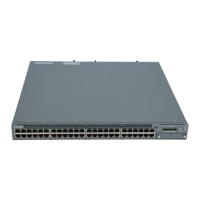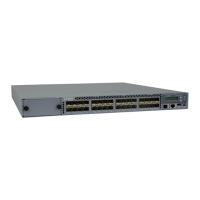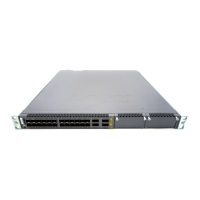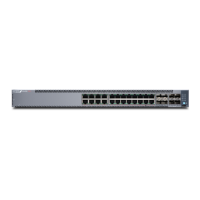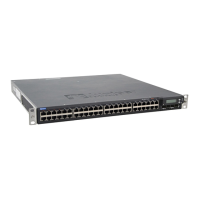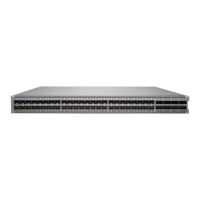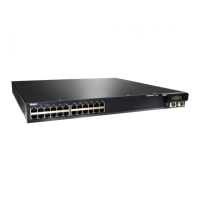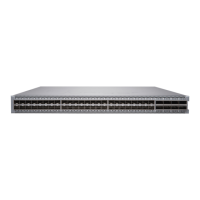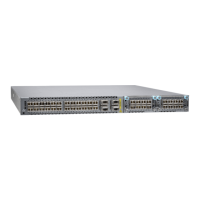Table 11: LCD Panel Menu Opons in EX4300 Switches
(Connued)
Menu Label Descripon
EZSetup congures DHCP and enables the J-Web user interface on the switch. The
LCD panel ashes a success or failure message for approximately 10 seconds, aer
which it displays the Idle menu.
NOTE: You can use EZSetup only on a standalone switch that is in the factory
default conguraon.
For informaon about EZSetup, see
Connecng and Conguring an EX Series
Switch (J-Web Procedure)
.
•
Press Menu to go to the next opon in the Maintenance menu.
•
EXIT MAINT MENU?—Choose one of the following:
•
Press Enter to exit the Maintenance menu.
•
Press Menu to return to the SYSTEM HALT? opon.
You can disable the Maintenance menu or the opons in the Maintenance menu in the
LCD panel. See
Conguring the LCD Panel on EX Series Switches (CLI Procedure)
.
SEE ALSO
EX4300 Switches Hardware Overview | 2
Connecng and Conguring an EX Series Switch (CLI Procedure)
Uplink Modules in EX4300 Switches
EX4300 switches provide a slot to install an oponal uplink module. Uplink modules are hot-insertable
and hot-removable eld-replaceable units (FRUs).
You can install an uplink module horizontally in the uplink module slot on the front panel of the switch.
By installing an uplink module, you add more ports to your switch, thereby increasing the port density of
the switch.
Table 12 on page 60 shows the uplink modules supported on 24-port and 48-port EX4300 switches
except EX4300-48MP and EX4300-48MP-S switches, their descripons, and the Junos OS release in
which the models were released. Table 13 on page 60 shows the uplink modules supported on 32-port
59

